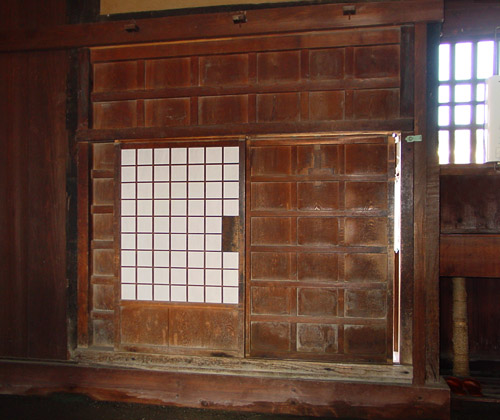|
||
 |
||
2@In the gardens of teahouses *chashitsu º, a small sliding or swing door with a high threshold, sometimes provided in the middle gateway *nakakuguri ö, dividing the inner and outer gardens. Also called kirido ØË.
3@An alternative term for a tearoom entrance *kuguriguchi öû.
4@The main door of the house which opened into the earthfloored area *doma yÔ in farmhouses nouka _Æ in parts of Akita, Hyougo and Saga prefectures.
|
|
| @ |
@
(C)2001 Japanese Architecture and Art Net Users System.@No reproduction or republication without written permission.
fÚÌeLXgEÊ^ECXgÈÇASÄÌRec̳f¡»E]ÚðֶܷB


